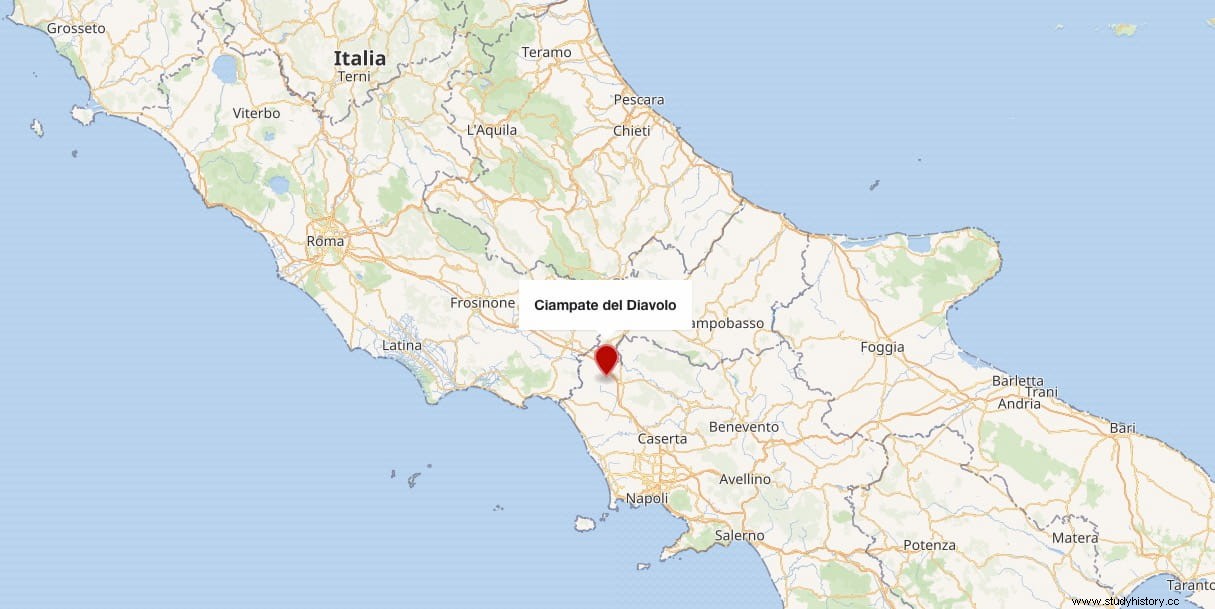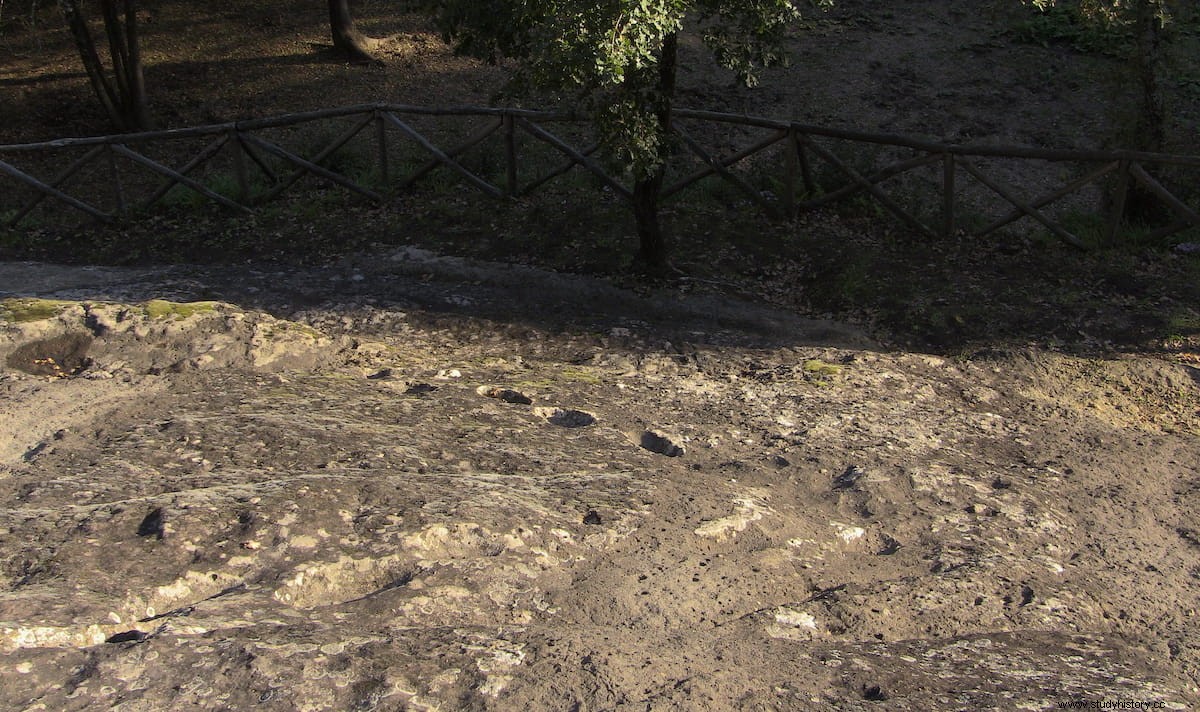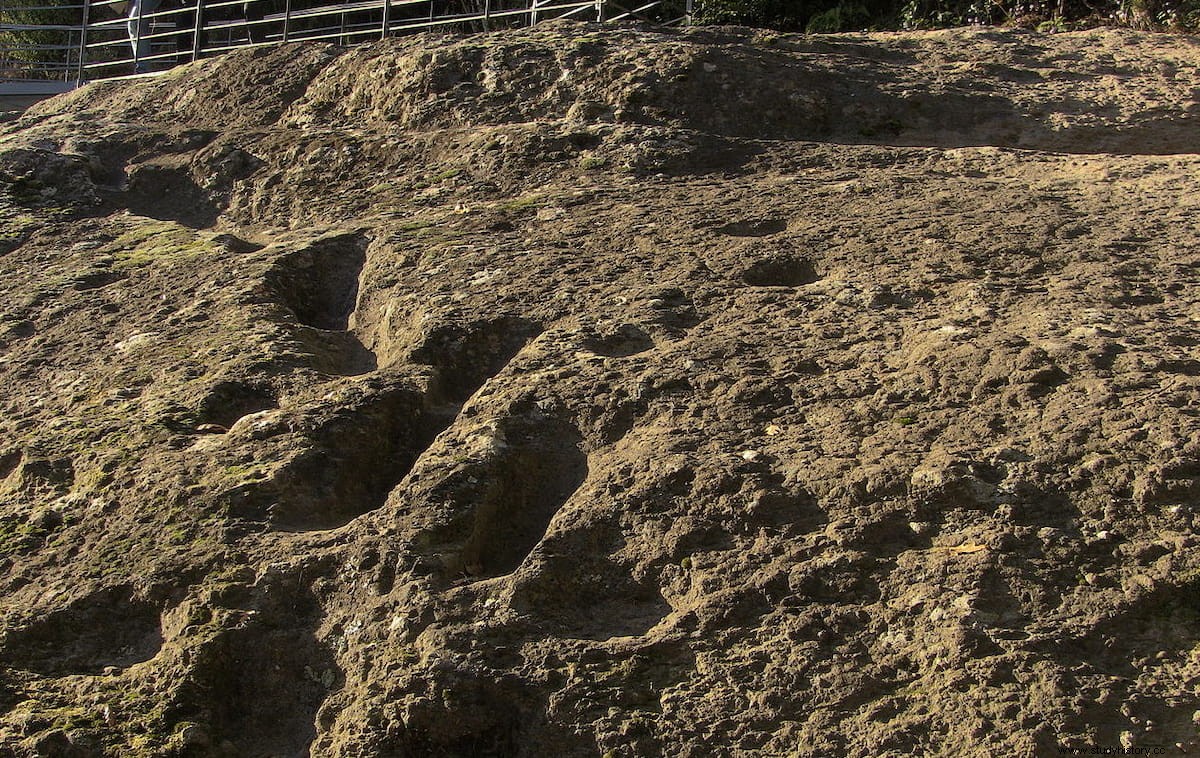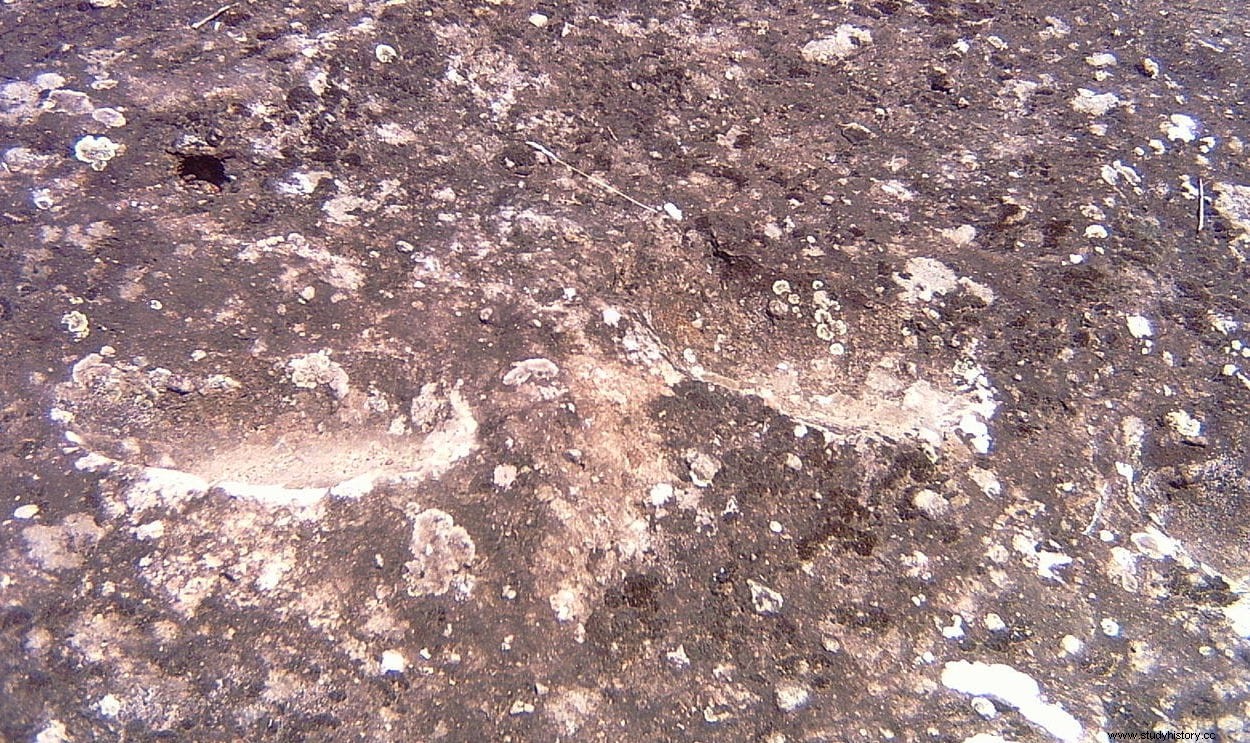Near the Italian town of Foresta in the province of Caserta, and very close to the extinct volcano Roccamonfina, there is an area called Ciampate del Diavolo (literally footprints of the devil ). It is named like this due to a trail of fossilized footprints, divided into three sections, clearly visible on the solidified lava of the volcano thousands of years ago.
The name given to it by the inhabitants of the area alludes to the belief that only a demon could walk on hot lava to leave these footprints.
Alerted by some hikers, in March 2003 Paolo Mietto, professor of stratigraphy at the University of Padua, and other archaeologists traveled to the site, who after conducting an analysis concluded that there was a less fantastic explanation.

Indeed, they were footprints left by hominids that lived in the area about 350,000 years ago, of the species Homo heidelbergensis , an ancestor of Neanderthals, Denisovans, and Sapiens.
According to Mietto, they belong to a group of three individuals who walked down the mountainside, along a steep slope, on the lava that was still hot from the volcano, moving away from the crater.

They were carefully descending a very steep and probably unstable slope, which is manifested by the Z-shaped course of the first set. The second shows a curved route, a sign that here they were less careful and slips and trips were frequent. The third is more linear and you can also see a couple of animal paw marks, perhaps from a large dog or a wolf.
In those places where they slipped they had to help themselves with their upper extremities, and they also left some handprints. In total there are 56 footprints that measure about 10 by 20 centimeters (the equivalent of a current size 36) and that suggest that the height of the individuals was approximately 1.55 meters.

The footprints were preserved because they were covered with a layer of volcanic ash and later, over the centuries, they came to light thanks to erosion. Towards the end of the 18th century or the beginning of the 19th they were already perfectly visible. This means that the hominins that left them did so when the volcano was still active, probably trying to escape the eruption.

These footprints are among the oldest left by hominins outside of Africa. But according to Matthew R. Bennett and Sarita A. Morse the main importance of this site is not in its age, but in the unique nature of the conservation and the traces themselves. Most of the track deposits consist of a horizontal surface; this site contains footprints that descend a steep slope and are particularly emotive, as they capture the sense of movement and haste of ancient hominids, yet provide little information about the anatomy of the foot or its normal gait pattern. The site is rightly a source of immense local civic pride and holds a unique and special place in the register of human footprint sites.
